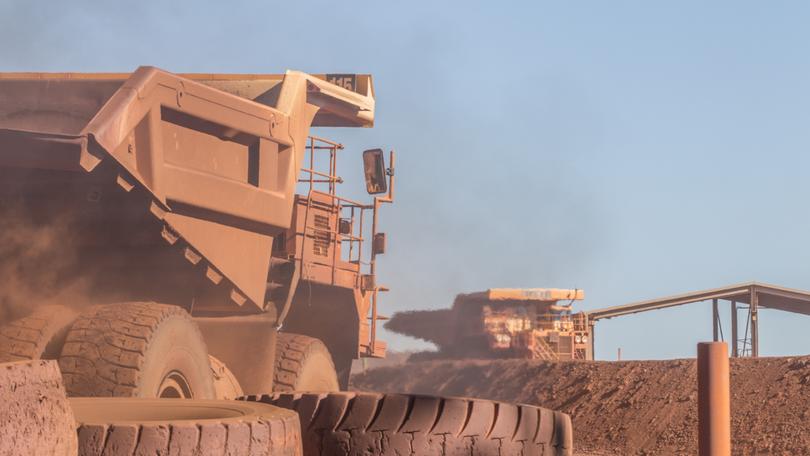Federal Budget 2024: Tax production credits for critical minerals, green hydrogen

Tax incentives worth almost $32 billion will be used to turbocharge critical minerals processing and green hydrogen production under the centrepiece of Anthony Albanese’s flagship Future Made in Australia plan.
Labor will also create a new “front door” to investors pitching “transformational” projects as the Federal Government tries to lure the global capital needed to turn Australia into a clean energy superpower.
The details underpinning Labor’s hotly debated Made in Australia plan have been unveiled in the Federal Budget - with WA’s mining sector emerging as a major winner.
Sign up to The Nightly's newsletters.
Get the first look at the digital newspaper, curated daily stories and breaking headlines delivered to your inbox.
By continuing you agree to our Terms and Privacy Policy.A total of $13.7 billion will be set aside over the next decade to fund tax credits for the processing and refining of critical minerals and production of green hydrogen.
The scheme will extend out to 2041, taking the estimated cost to $31.9 billion.
The announcement will be warmly welcomed by WA’s critical mineral miners, which lobbied hard for a production tax credit scheme to rival the subsidies offered under the US’ landmark Inflation Reduction Act.
Treasurer Jim Chalmers said the Federal Government needed to adapt its approach to investment if it wanted to seize the “golden opportunity” presented by the global clean energy shift.
“If we hang back, the chance for a new generation of jobs and prosperity will pass us by – and we’ll be poorer and more vulnerable as a consequence,” Dr Chalmers said.
“This Budget invests in our renewable energy superpower ambitions”.
The Federal Government will offer miners a 10 per cent tax credit on the cost of processing and refining any of the 31 resources on the Commonwealth’s critical minerals list.
That includes nickel, which was belatedly added to the list earlier this year amid the industry crisis triggered by the flood of cheap supply from Indonesia.
The credits are not due to start until 2027-2028, meaning the lifeline will probably come too late for miners already on the brink of collapse.
Companies will need to reach final investment decision on a project by 2030 to access the credits, which will be available for a maximum of 10 years per development.
Capping the length of time a project can be supported addresses a key concern from Future Made in Australia sceptics, including Productivity Commission chair Danielle Wood, who warned the Government risked creating a class of business that were permanently reliant on taxpayer subsidies.
Modelling from the Association of Mining and Exploration Companies found a production tax credit scheme would inject $2.4 billion into the economy each year by 2035, supporting 4220 jobs.
“This strategy is the shot in the arm that the mining and exploration sector need to pursue value-adding for critical minerals,” AMEC chief executive Warren Pearce said.
Labor is also ramping up its support for the nascent green hydrogen industry, offering a $2 tax credit for every kilogram produced for up to 10 years per project.
The hydrogen credits also won’t start flowing until 2027-2028, with the Federal Government needing time to refine the scheme and pass legislation to amend the tax system.
Both the hydrogen and critical minerals programs will be uncapped, meaning the cost to the Federal Budget could be even greater if there is a strong take-up.
An extra $1.3 billion over 10 years will be poured into the Commonwealth’s Hydrogen Headstart scheme to subsidise more flagship projects.
The tax credits are by far the most expensive component of wider Future Made in Australia plan, which will cost $22.7 billion over 10 years.
Prime Minister Anthony Albanese unveiled the vision in April, promising to legislate a Future Made in Australia Act to guide the investment of taxpayer-funded grants and subsidies into industries critical to the clean energy transition.
The planned intervention sparked a major political and industry backlash, with critics warning the plan would need rigid guardrails to avoid wasting taxpayer dollars.
Under the plan unveiled on Tuesday night, the Federal Government will use a new National Interest Framework to guide investments in sectors that are either critical to the net zero transformation or Australia’s economic security and resilience.
The budget has identified five industries aligned with the framework: green hydrogen, critical minerals processing, green metals, low carbon liquid fuels and clean energy manufacturing, including solar panels.
A further $1.7 billon will be tipped into a Future Made in Australia innovation fund to help kick-start the emerging industries.
The Government also wants to make it easier for investors to submit major, “transformational” projects for funding via a new “front door”.
Proponents will have a single point of contact inside Government and benefit from fast-tracked and coordinate approvals.
Almost $135 million has been set aside to prioritise approvals for nationally significant green energy projects and deliver faster decisions on environment, cultural heritage and planning approvals.
